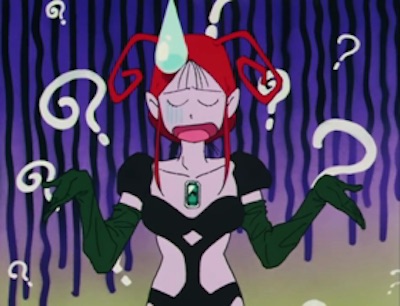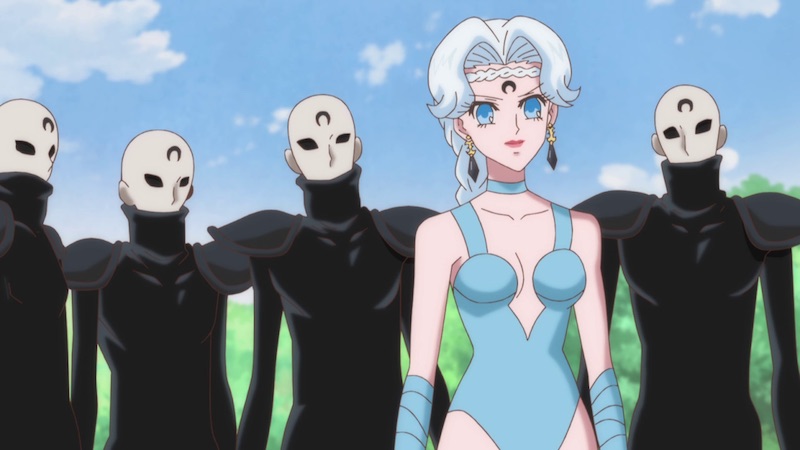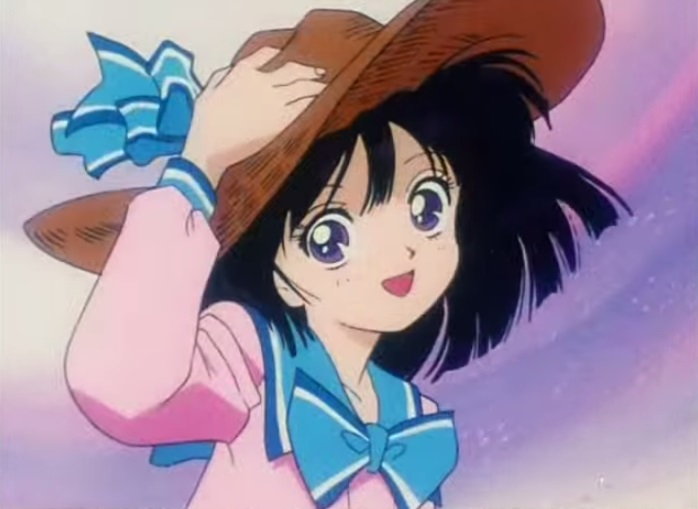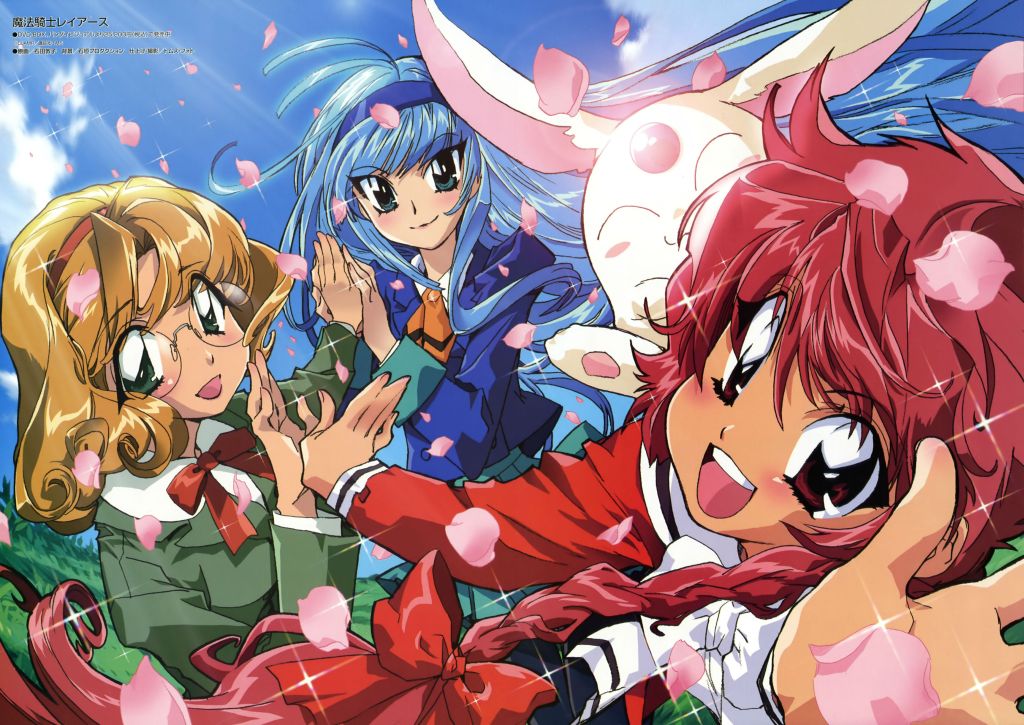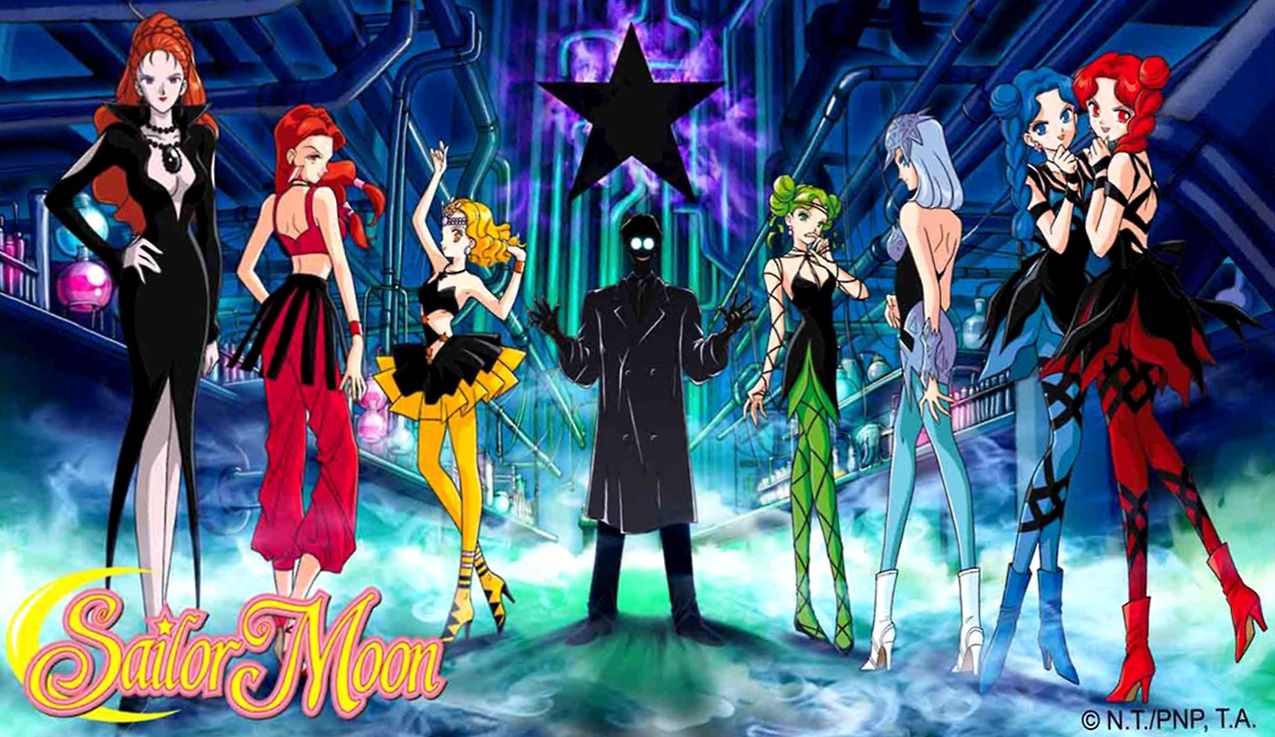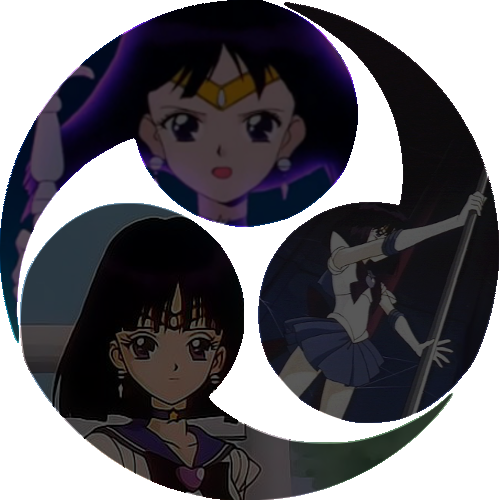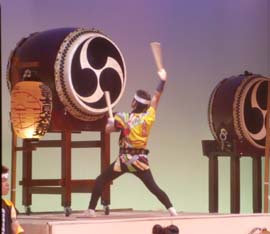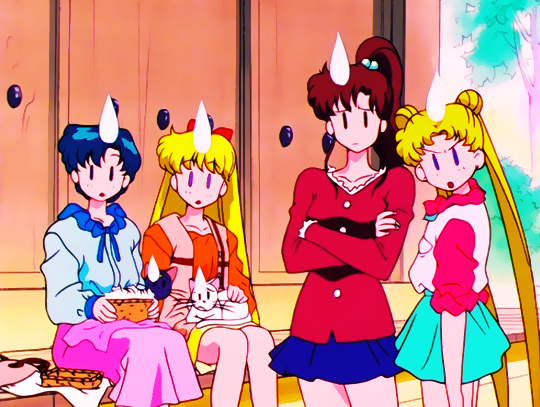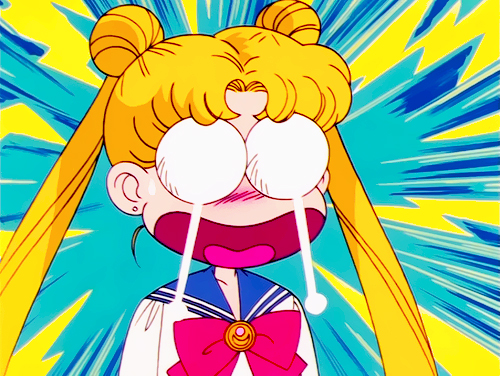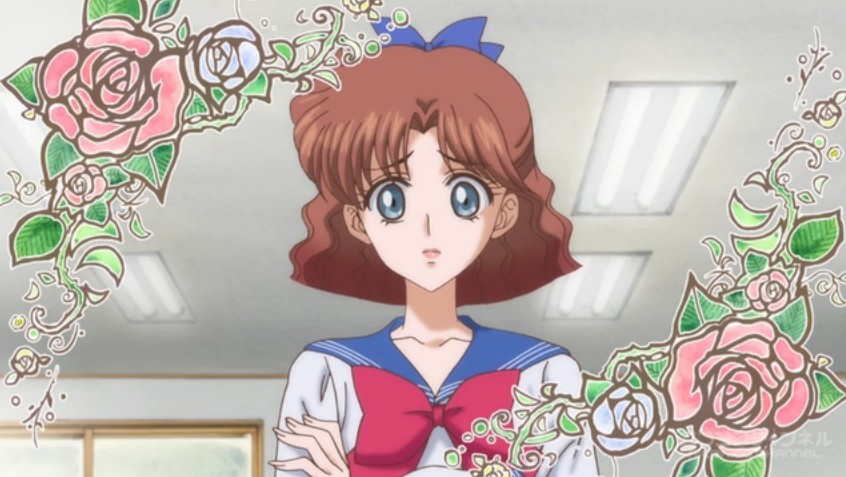I’m assuming that most of you have already read the first part to this series investigating the playful puns, recycled references, and hidden history behind the names given to the droids throughout Sailor Moon‘s Black Moon arc. If you haven’t had a chance to read through it yet, you might want to read through part one first. With that out of the way, let’s take a look at how the remaining droids got their names!
Tag Archives: Names
How Did the Black Moon’s Droids Get Their Names? (Part 1)
That’s right, it’s that time again where we get to look at the hidden meanings behind the names of the various youma of the Dark Kingdom, Ail and An’s Cardians, and other various naming mysteries in the Sailor Moon universe. While many of the names are just simple puns related to a trait of the particular droid, compared to the youma it looks like the production staff dug deep to find some really interesting references this time around. So, let’s take a look!
Is Hotaru the Source for the Otaku Slang Term “Moe”?
For anyone who has been keeping up with anime terminology and slang popularly used in the otaku sub-culture (both in Japan and abroad), you have no doubt run across the term moe. Probably quite often, in fact. Though the term itself mostly is used to refer to the sense of adoration or affection toward a given character, it can also be used in reference to a character (or actions by said character) which would elicit such reactions. One of the popular theories is that the term was first inspired by Hotaru, which is what we’re going to look at today!
[Off Topic] How Deep Is the Car Connection in Magic Knight Rayearth?
In a word? The connection between automobiles and the characters, locations, and even magic spells in CLAMP’s Magic Knight Rayearth (MKR) series is “thorough.” In a phrase? There’s basically nothing in MKR which is doesn’t in some way connect back to car brands or the companies which manufacture them, either Japanese or foreign. Though the purpose of this blog is to investigate the mysteries of the characters and world of Sailor Moon, this is a topic that’s interested me for awhile and I figured it’d be worth taking a quick dive down this rabbit hole. If you’re interested, please do read on!
Where Did the Death Busters Get Their Names?
It seems that this question comes up at least once every season, but it’s just too much for me to pass up on the opportunity to discuss the depth that Ms. Takeuchi goes to when naming her characters. And that’s saying nothing of the entirely different styles of pun-tastic names that the anime producers went with when naming their various youma, cardians, droids, daimons, and other monsters of the day. Now that the Death Busters have made their long-awaited appearance in the Sailor Moon Crystal anime, it seems like now is as good of a time as ever to discuss how it is that they characters got their names. So what was the inspiration behind the names of the Witches 5 and the other members of the Death Busters?
What is a Tomoe and Its Connection to Saturn / Hotaru?
It would probably be fair to say that the historical connections and meanings behind the names of the Sailor Moon cast seems to be something of a running theme for me. On the other side of the coin, though, Ms. Takeuchi definitely seems to have done her homework when it comes to naming her characters and even went out of her way to add hidden references to the character’s planets and personalities. And that’s not even talking about all of the in-jokes and references that the anime staff put in!
As most any Sailor Moon fan can tell you, all of the Sailor Soldiers are named in a way that directly references their planets (though the Minako/Venus connection isn’t so obvious). Once she reached the Outer Soldiers, in fact, their names literally come from the Japanese names for their respective planets,1 with the final character for star/planetary-body (星; hoshi)2 omitted. However, oddly enough, Hotaru’s last name, Tomoe, doesn’t fit so neatly into this naming system. In fact, other than the fact that the To part of her name is made up of the symbol for soil (土; tsuchi/to),3 which is the Japanese elemental symbol representing Saturn.4
What about Moe? Well, the kanji used is an alternate (uncommon and used only for names)5 way of writing moe (萌え; infatuation),6 which I’m sure is a term that many modern fans of Japanese anime are familiar with.7 So at first blush, one could assume that Hotaru’s last name implies that she is infatuated with the earth… but that would be incorrect. As with the names of some other characters, the most obvious Japanese translation is not always the correct answer, and that’s also the case here with Hotaru’s last name.
You see, the more likely interpretation is that the kanji which make of Tomoe (土萠) are irrelevant and that her name is actually a direct reference to the Japanese shape known as a tomoe.8 In its most common form, as a mitsudomoe (三つ巴; triple tomoe) which is commonly found on Shinto shrines and on taiko drums, it is said to represent the three-fold division between mankind, earth, and sky. Incidentally, going back to its Shinto roots (though the symbol also appears in Korea, China, and throughout Asia, so it’s fair to say that its origins are not Japanese), the tomoe was traditionally associated with Hachiman, the god of war.9 What’s more, this was also the symbol used on the flag of the Ryukyuan Kingdom10 and is today strongly associated with karate and various other forms of martial arts throughout Okinawa, further cementing its military nature.
Taken all together, it’s pretty apparent that the stronger connection for Hotaru here would be with the tomoe symbol, both for its military applications (which ties in nicely with her status as one of the most powerful Sailor Soldiers) as well as for its symbolism related to the various stages of life – birth, death, and life in heaven.
As usual, I really have to give it to Ms. Takeuchi to be able to slip references like this in, all the while making it seem totally natural. Not only did she manage to include the reference to the planet Saturn, but even managed to include a far deeper cultural reference. She never ceases to amaze!
How Uncommon Are the Names of the Sailor Moon Characters?
We’ve discussed on several occasions the difficulties involved in localization, particularly when it comes to names, but we haven’t often discussed the names of the main characters themselves (with some exceptions), and how uncommon or strange they may seem. In fact, when the Sailor Moon manga was first being localized into English by Mixxzine1 (before being moved to Smile2 and then serialized by Tokyopop)3 – one of the first magazines for localized manga to be widely distributed in the U.S. – there was a lot of debate among fans over how Usagi’s name was localized.
While many fans either preferred the name Serena, as used in DiC’s localization of the anime, many other fans expressed an affinity for the Japanese original name. Mixx’s choice to translate Usagi’s name literally as Bunny was divisive to say the least. On one side of the argument, you could say that this is how Japanese readers interpreted the name—as a word found in the dictionary. On the other, one could argue that just like Dick Dastardly4 and many other children’s cartoons in the West, the name is simply an extra to give you further insight into the character.
Since there’s no “correct” solution to this issue of nuance in Japanese being lost in localization, I think it’s worth taking a look at this issue from another direction: just how made up are the names of the Sailor Moon cast, and are they really as obscure and fictional as we’ve all been led to believe? How many people can there actually be who are named “… of the moon,” anyway?
There are at least 251 households named Tsukino.
According to this index5 of 19,661,494 Japanese phone book listings, at least. Another site, which uses both phone records and and government census data,6 says that there are approximately 1,500 people with the last name Tsukino, making it the 6,402nd most popular last name in Japan. The site also provides an interesting look into the origin of the last name:
現鹿児島県東部である大隅国曽於郡月野が起源(ルーツ)である。近年、鹿児島県に多数みられる。 「野」は自然のままの広い地を表す。
The origin of the name is the village of Tsukino in the Soo district of Oosumi province in what is now the eastern part of present-day Kagoshima prefecture. There are many with the name found in Kagoshima prefecture. The character for “no” (野) means a wide-open natural space.
That’s right, if you were to go to Soo county in Kagoshima,7 you could very well meet someone named Tsukino. So in terms of realism, how do the rest of the characters fare?
| Name | No. Households | Ranking | Most Common In |
| Tsukino | 251~1,500 | 6,402 | Kagoshima |
| Mizuno | 26,216~175,000 | 105 | Aichi |
| Hino | 4~20 | 64,633 | Oita |
| Kino | 1,284~8,700 | 1,811 | Shizuoka |
| Aino | 21~140 | 26,233 | Hokkaido |
| Chiba | 34~230 | 19,895 | Yamagata |
| Tenoh | 13~80 | 36,041 | Hiroshima |
| Kaioh | 0 | NA | NA |
| Tomoe | 0 | NA | NA |
| Meioh | 0 | NA | NA |
| Osaka | 172~1,200 | 7,346 | Osaka |
I guess it shouldn’t be all that surprising that Mizuno would be that common of a last name (almost breaking into the top 100!) considering that there’s the Mizuno Corporation,8 a popular brand of sports equipment. More than anything else, though, I was surprised to see that nearly all of the last names of the main cast (with the exception of Michiru, Hotaru, and Setsuna) actually exist in the real world. Even Ms. Naru Osaka, who I always figured was a pure parody name, actually has some real-world relatives in the – big surprise! – Osaka region of Japan.
So there you have it! Though obviously Ms. Takeuchi picked the character names in order to match them with their representative planets as well as their chosen element and, to be honest, it may simply be a pure coincidence that any of these are real-world names at all, I for one am glad to see that there is at least one more touch of reality in the world of Sailor Moon.
And for anyone who’s curious – no, there’s no one in Japan that I could find named Usagi. Too bad!
